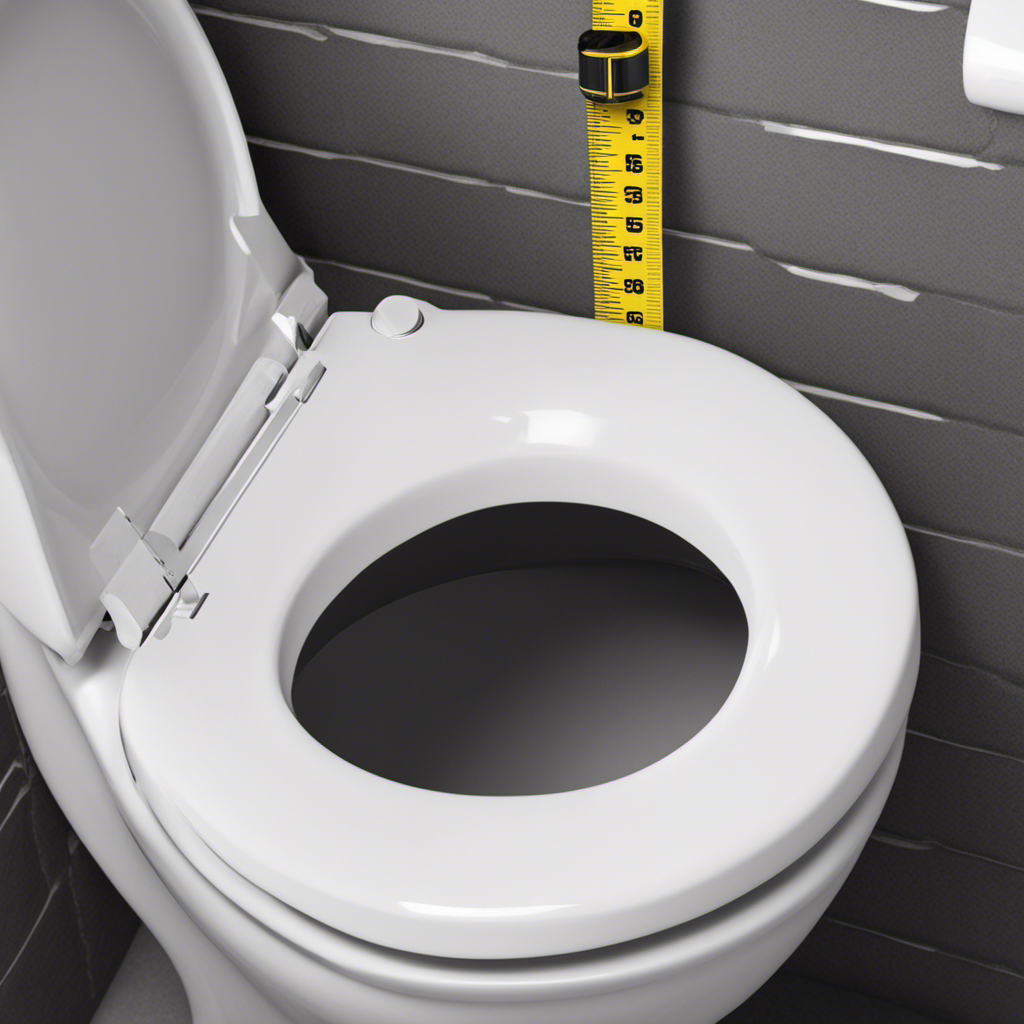I gotta admit, moving a toilet can be a real pain in the you-know-what. But with the right tools and know-how, it’s definitely doable.
In this article, I’m gonna walk you through the step-by-step process of how to move a toilet like a pro. From shutting off the water supply to reconnecting everything in its new location, I’ll cover it all.
So, buckle up and get ready to tackle this bathroom renovation challenge head-on.
Key Takeaways
- Evaluate the space and measurements for the new location
- Consult a professional if needed to assess plumbing connections
- Properly shut off the water supply valve and drain the toilet
- Take care to remove the wax seal when removing the toilet
Assessing the Situation
Before you start moving the toilet, it’s important to assess the situation and determine the best approach. Evaluating the space and considering plumbing requirements are crucial steps in this process.
Firstly, examine the area where the toilet is currently installed. Take measurements to ensure that the new location can accommodate the toilet and meet the necessary clearances. Additionally, assess the plumbing connections to determine if any adjustments or modifications are needed. Check the water supply lines and drainage pipes to ensure they can be easily connected to the new location. If any changes are required, consult a professional plumber to ensure proper installation.
Once you have evaluated the space and plumbing requirements, you can move on to gathering the necessary tools and equipment for the relocation process.
Gathering the Necessary Tools and Equipment
Once you’ve checked the necessary tools and equipment, you can begin the process. Moving a toilet requires careful planning and execution to ensure a smooth relocation. Here are some important safety precautions during toilet relocation:
-
Turn off the water supply: Before starting, shut off the water supply valve to prevent any leaks or flooding.
-
Empty the tank and bowl: Flush the toilet and use a sponge or towel to remove any remaining water from the tank and bowl.
-
Protect the flooring: Place a drop cloth or old towels on the floor to protect it from any potential damage during the moving process.
Now, let’s discuss some common mistakes to avoid when moving a toilet:
-
Not properly supporting the toilet: Always ensure that the toilet is properly supported and stable during the relocation process to prevent any accidents or damage.
-
Forgetting to seal the wax ring: Before reinstalling the toilet, make sure to properly seal the wax ring to prevent any water leaks.
-
Reconnecting the plumbing incorrectly: Take your time to reconnect the plumbing correctly, ensuring tight connections and proper alignment to avoid any leaks or issues.
Shutting Off the Water Supply and Draining the Toilet
To prevent leaks or flooding, make sure to turn off the water supply valve and empty the tank and bowl before starting the relocation process. Proper disposal of wastewater during toilet relocation is crucial to maintain cleanliness and prevent environmental contamination.
Once the water supply is turned off, flush the toilet to remove as much water as possible from the tank and bowl. To drain any remaining water, use a sponge or bucket to soak up the water from the tank and bowl. Dispose of the wastewater in a sanitary manner, such as pouring it down a drain or toilet in a different location.
Additionally, it is essential to ensure the structural integrity of the new location for the toilet. Make sure the floor is level, sturdy, and capable of supporting the weight of the toilet to avoid any future issues.
Disconnecting and Removing the Toilet
First, you’ll need to disconnect the water supply line from the bottom of the toilet tank. This is an important step in removing the toilet safely and efficiently. Here’s what you need to do:
-
Turn off the water supply valve located near the toilet. This will prevent any water from flowing into the tank while you work.
-
Use an adjustable wrench to loosen the nut connecting the water supply line to the bottom of the toilet tank. Turn the nut counterclockwise until it is loose enough to remove by hand.
-
Once the nut is removed, carefully lift the water supply line out of the tank. Be cautious not to spill any water that may still be in the line.
Now that the water supply line is disconnected, you can move on to removing the toilet by following proper lifting techniques and taking care to remove the wax seal.
Reinstalling the Toilet in Its New Location
Now that you’ve successfully disconnected the water supply line, it’s time to reinstall the toilet in its new location.
Reinstalling a toilet may seem daunting, but with the right techniques, it can be a straightforward process. Start by inspecting the toilet flange and ensuring it is securely attached to the floor. If it is damaged or loose, replace or repair it before proceeding.
Next, position the wax ring onto the flange, ensuring it is centered. Carefully lower the toilet bowl onto the wax ring, making sure the bolts align with the holes in the flange. Gently press down on the toilet to compress the wax ring and create a watertight seal.
Finally, tighten the bolts evenly, alternating between sides to prevent cracking the toilet base.
Potential challenges during the reinstallation process include aligning the toilet with the flange and achieving a proper seal with the wax ring. Take your time and make adjustments as needed to ensure a successful installation.
Frequently Asked Questions
How Long Does It Typically Take to Move a Toilet?
Moving a toilet typically takes about 1-2 hours. To properly disconnect and reconnect a toilet, you’ll need a wrench, plunger, bucket, and sealant. Follow these steps for a successful relocation.
Can I Move a Toilet on My Own, or Do I Need Professional Help?
Moving a toilet without professional help is possible, but there are risks involved. It requires technical knowledge and specialized tools. One wrong move and you could damage the plumbing system or injure yourself.
Will Moving a Toilet Damage the Flooring or Plumbing System?
Moving a toilet without proper precautions can potentially damage the flooring and plumbing system. It is crucial to take necessary steps such as using flooring protection and conducting a plumbing inspection to ensure a smooth and safe relocation process.
What Should I Do if I Encounter Any Difficulties During the Toilet Moving Process?
If I encounter difficulties during the toilet moving process, I would troubleshoot by checking for common mistakes like improper connections or leaks. I would also consult professional advice or tutorials for guidance.
Are There Any Safety Precautions I Need to Take While Moving a Toilet?
When moving a toilet, it’s important to take safety precautions. Wear gloves and safety glasses to protect yourself from any sharp edges or spills. Tools needed include a wrench, plunger, and bucket.
Conclusion
In conclusion, moving a toilet may seem like a daunting task, but with the right tools and knowledge, it can be accomplished smoothly. By following the steps outlined in this article, you can successfully assess the situation, gather the necessary tools, shut off the water supply, disconnect and remove the toilet, and reinstall it in its new location.
Remember to take your time and be cautious throughout the process to avoid any mishaps. So, grab your wrench and get ready to tackle this project like a pro!










